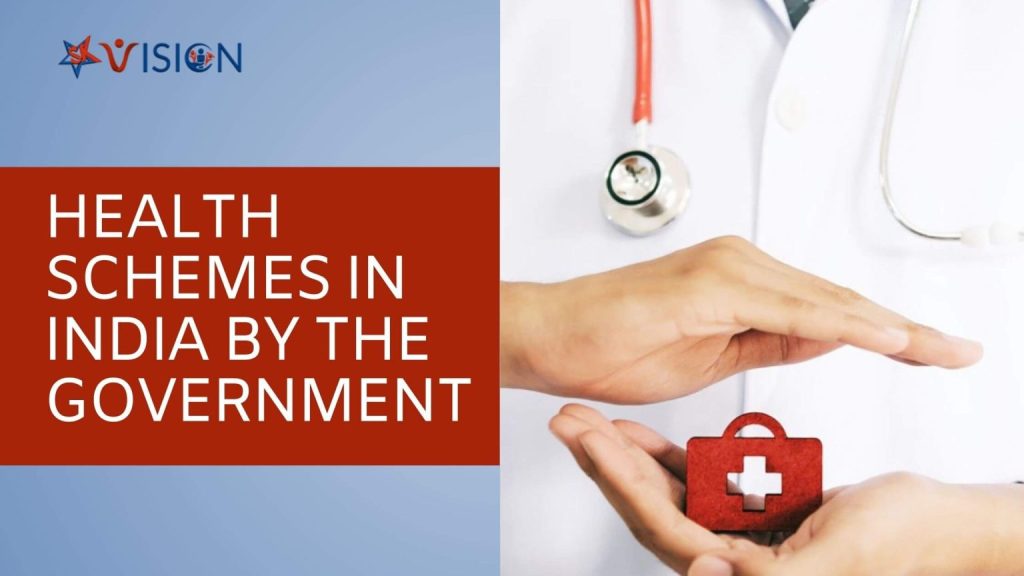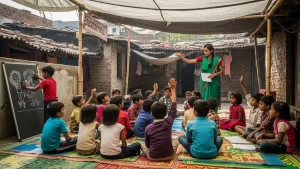
Government health programs provide many benefits for their citizens. The main benefit of government health programs is that they provide everyone in society with access to high-quality health care. These programs, including various health schemes in India, aim to meet the demand for health services.
Importance of Government Health Schemes
- Government healthcare programs help people get free medical care at renowned hospitals. Both national and state governments provide funds for these types of initiatives to help people in need.
- Government-funded healthcare organizations provide free and reasonably priced medical care for the well-being of people everywhere.
- The Government of India has launched many health schemes for those people whose financial condition is not good. These schemes will help to improve the healthcare system of India.
- The Government of India aims to provide high-quality healthcare to its citizens.
- The government does good work for the welfare of the people by promoting health insurance. These schemes ensure that no person is left behind without any medical assistance.
Objective behind Government Health Schemes
The main objective of government health schemes is to provide financial security to those who are in urgent need of health care. Expensive medical costs have made things extremely difficult for those who are financially unstable. There are many government schemes launched to support girls’ education and health.
Government health insurance programs are health plans in which the government provides financial assistance to disadvantaged people. Indian people can take benefit from many government health insurance schemes launched for them.
These plans provide hospital bills, cashless treatment and accident benefits. Government health insurance programs are available to all citizens who are eligible for them. All Indian citizens can avail of the benefits of the National Health Scheme.
Some of the Health Schemes in India are given below:
1. Pradhan Mantri Suraksha Bima Yojana
- Anyone between the ages of 18 and 70 is eligible to participate in this program, and in the case of the account holder’s death, the nominee can take advantage of the benefits.
- The person needs to have a bank account, phone number and an Aadhaar card connected to it. While applying for the program, the applicant must provide their Aadhaar data.
- All account holders of the Pradhan Mantri Suraksha Bima Yojana are eligible for one-year life cover of Rs. 2 lakh. This life insurance covers accidental death and permanent disability. In cases of partial disability, the beneficiary is given a life insurance policy of Rs.1 lakh
- Any member of the scheme is eligible to receive an annual premium of Rs 12. This premium is automatically deducted in one installment on or before June 1st every year.
2. Ayushman Bharat
The National Health Protection Mission or Ayushman Bharat
Ayushman Bharat will provide a defined benefit plan of Rs. 5 lakh for each family annually. A beneficiary covered by the program may also collect cashless benefits from any public or private hospital in this country. The benefits are transferable across the nation.
- Ayushman Bharat will be an entitlement-based program, with eligibility determined by the SECC database’s deprivation criteria. Benefits are available to the recipients in both impaneled private and public facilities.
- Treatment payments will be made on a package rate basis, which is determined in advance by the government, to keep expenses under control.
- Cooperative federalism and state autonomy are two of Ayushman Bharat’s main principles, along with health protection.
- The Ayushman Bharat National Health Protection Mission Council (AB-NHPMC) will be chaired by the Union Minister of Health and Family Welfare and set up at the highest level to provide policy direction and promote collaboration between the Centre and the States.
- To implement the scheme, each state will need a State Health Agency (SHA).
There are also parts of Ayushman Bharat Yojna :
- Health and Wellness Centers (HWCs)
- Pradhan Mantri Jan Arogya Yojana (PM-JAY)
3. Bhamasha Swasthya Bima Yojna
- All family members are eligible to enrol. There is no age limit. Hospitalization expenses for all registered family members are covered by single-family floater insurance.
- Payment of medical costs incurred before and after hospitalization. Pre-admission costs for seven days and post-admission costs for fifteen days are covered by insurance.
- Coverage is offered for a wide range of medical packages, surgerie and treatments.
- A wide network of impaneled hospitals enables cashless treatment facilities.
- Additional expenses related to hospitals were also included, such as supplies, equipment, food, etc.
4. Mahatma Jyotiba Phule Jan Arogya Yojana
- A variety of surgical and medical procedures are offered by the Mahatma Jyotiba Phule Jan Arogya Yojana (MJPJAY).
- This scheme provides orthopedic surgery. These include joint replacement operations such as knee and hip replacements.
- Neurosurgery for conditions such as spinal cord injury, brain tumor and brain aneurysms.
- Cardiovascular procedures, such as valve replacement, angioplasty, and coronary artery bypass surgery, etc.
- Eye operations including cataract and retina surgery.
- Oncological procedures, such as mastectomy and tumor removal, to treat various types of cancer.
- Surgery for organ transplantation, such as liver and kidney transplants, among others. Urological operations are used to treat conditions such as prostate enlargement and kidney stones.
- Gynecological surgeries, such as those performed to treat ovarian cysts, fibroid, and other issues.
- Pediatric surgery includes procedures for congenital anomalies, pediatric cancer, and other diseases.
- Burn operations and reconstructive surgery after trauma or accident are examples of plastic and reconstructive procedures.
- To provide healthcare services to the people of Maharashtra, Mahatma Jyotiba Phule Jan Arogya Yojana (MJPJAY) collaborates with a network of hospitals, including government, commercial, trust and multi-specialty institutions.
- After reviewing the hospital list for Mahatma Jyotiba Phule Jan Arogya Yojana, you can personalize your health insurance plan with Future General DIY Health Insurance Plan.
5. Aam Aadmi Bima Yojana
- In case of death or disability of the insured, the AABY program provides financial assistance to the family members of the insured.
- The AABY program is available to people from all economic strata because its rates are extremely low and government-subsidized.
- Threats like earthquakes and floods are also covered under the AABY scheme.
- People can register for the AABY program at any stage of the year, and the enrollment process is simple.
- The AABY program provides additional benefits for women, such as coverage for female-headed households and maternity benefits.
- People who work in the organized sector, like government employees or employees of private companies who have provident funds, are not covered under this system.
- Individuals paying income tax are not covered under this program.
People who are currently insured through other insurance schemes are not covered under this scheme. - People who are not the breadwinners of the family do not come under the purview of this system.
6. eSanjeevani
The Ministry of Health and Family Welfare of the Indian government provides the first-ever online outpatient (OPD) consultation service, which is called eSanjeevani. eSanjeevani provides health treatments(remotely)in the convenience of their own homes, without needing them to leave. It also makes it possible to receive medication at home.
In November 2019, the eSanjeevani program started. Because of this the quality and accessibility of health care has risen significantly.
It is also known as the National Teleconsultation Service. There are some important points given below:
- The program started in November 2019.
- The Ministry of Health and Family Welfare has authority over it.
- It is also known as the National Teleconsultation Service and its goal is to offer people healthcare services in the comfort of their own homes.
- It consists of a controlled and secure online teleconsultation between a physician and a patient (eSanjeevani OPD).
- The Centre for Development of Advanced Computing (C-DAC) in Mohali is the organization responsible for creating the eSanjeevani OPD portal and system.
- The state governments choose the doctors who will be on the service panel.
- A few states have also begun to provide specialized medical consulting services, including Jharkhand, Kerala, Punjab, Tamil Nadu, and others.
- There is an app for smartphones for the service too.
Conclusion:
The global economy depends largely on the healthcare industry, which is made up of a variety of enterprises, services, and technologies focused on enhancing the quality of life and healthcare outcomes.
These health schemes in India not only provide essential support to the underprivileged but also contribute significantly to improving the overall healthcare system.

